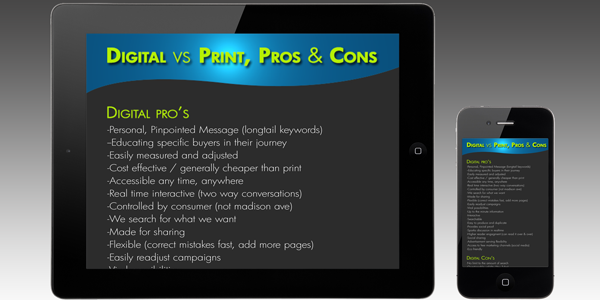The Math Behind Your Marketing
If you're a marketing professional then this blog may touch on a topic a little scary to you. Marketing math. Numbers might be something you shun or embrace. But either way, numbers can help you explain the madness or methodology behind client marketing campaigns.
As a marketer you probably work tirelessly to move the needle on a long list of metrics, no matter which industry you work in. You look at website visits, conversion rates, leads generated, social media engagements, shares, click-through rates…and the list goes on.

As a marketer you need to have a level of comfort with the marketing math behind the metrics you follow every month. These metrics allow you to measure and adjust your marketing efforts, whether it be for your own company or for your clients.
The modern marketer must know “marketing math”. There is no guessing in sales and there should be no guessing when it comes to marketing. Every piece of a marketing spend should be trackable and measurable so you know where the money is going. With this information, you can make better decisions in your strategy, budgeting and planning. You can also think of your marketing math as part of goal setting as well. Using numbers you can set your S.M.A.R.T goals for your marketing campaigns and life in general.
There's an endless amount of metrics you can use but let’s start with a simple one that most all customers understand when it comes to a marketing spend: Return On Investment (ROI).
ROI is one metric that most everyone is familiar with and concerned with. After all, we need to know if the dollars we spend is worth the efforts we put in.
Traditionally, ROI can be calculated as (Revenue - Investment).
Investment
However, since we are not taking into account the cost of goods sold (COGS), using revenue would be overtstating our ROI. Instead, we'll use gross profit. Which is revenue minus COGS. This is still is still different than our operating profit, which would also take into account overhead, payroll & EBITA.
Now our formula looks like this (Profit - Investment)
Investment
What would ths actually look like with real numbers but a not so real product of wickedylicks. Lets say our wickedlicks cost $2 but sell for $3.50. We spend $6000.00 a month to market these wikedylicks. We got 20 customers out of 200 leads, which is a conversion rate of 10%. The average order per each customer was 900.
Profit = Gross Revenue - COGS
which looks like:
27,000.00 = 20 orders * 900 wickedylicks * $3.50 - 20 orders * 900 wickedylicks * $2.00.
ROI = Profit - Investment / Investment
$27,000 - $6,000.00 / $6000.00 = 350%
So, for every dollar spent on marketing we got a return of $3.50. Good.
As a marketer, you care about how much money is going out, and coming in. Break down your marketing by using tracking and reporting to help identify what brings the most return for your investment. This allows you to measure your marketing strategy to decrease or increase your spend in specific areas.
To dive deeper into the ROI and other marketing math formulas that can enhance your success, download our marketing metric workbook below.



Leave a Comment